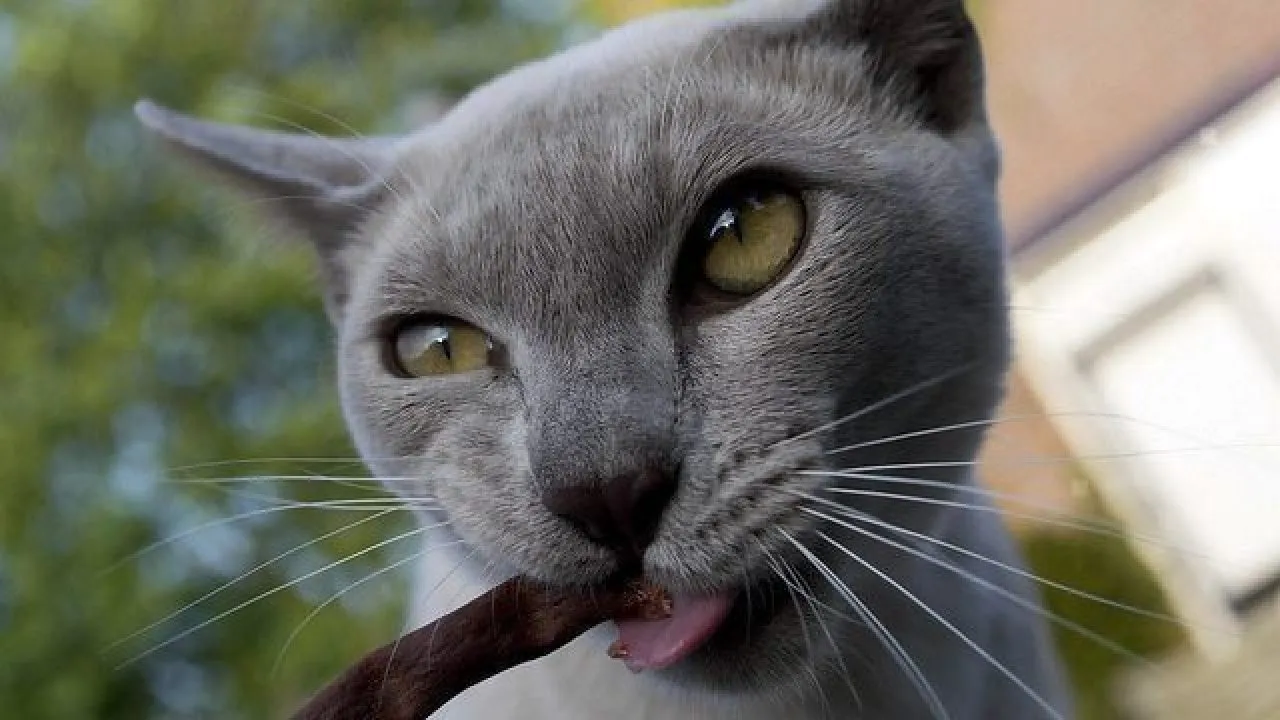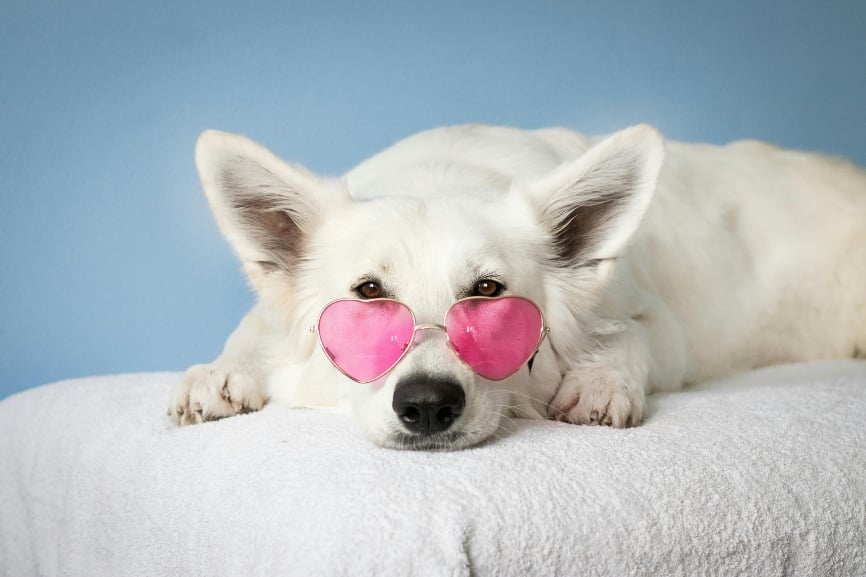Table of Contents
Key Takeaways
- Many indoor plants are toxic to dogs and cats.
- Poisonous plants ranked the fourth most common cause of poison-related pet insurance claims.
- Be especially wary of caladium, lilies (toxic to cats), and sago palms.
Pets may love certain types of household flora, but others can be extremely poisonous to cats and dogs. My cat Bug recently recovered from an accidental poisoning courtesy of an indoor plant last July. One morning we discovered vomit containing the stamen and pistils – flower parts – from the large, yellow Asiatic lilies on the nightstand. We had no idea what time she had eaten them or how many.
A quick Google search revealed the flowers are (of course) extremely poisonous to cats: “Even small ingestions (such as 2-3 petals or leaves) – even the pollen or water from the vase – can result in severe, acute kidney failure,” says the Pet Poison Helpline. After a call to the local vet clinic, Bug was brought in for overnight observation and rehydration to flush out and combat the toxin. She had no adverse reactions – seizures and vomiting are known to occur – and came home 12 hours later, her fur lush and plump from the intensive IV fluids.
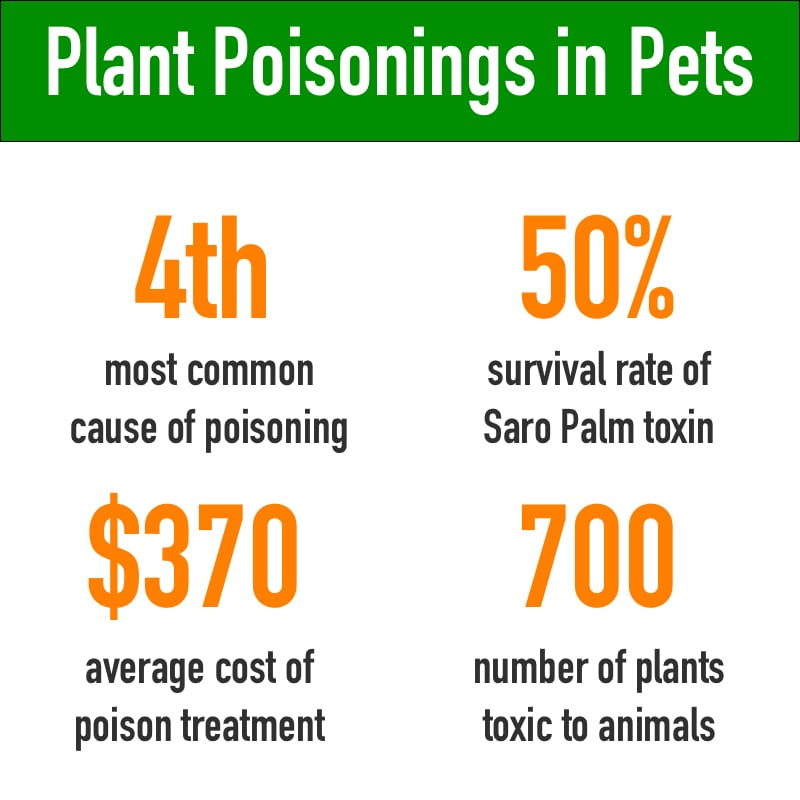
Accidental poisonings are extremely common among dogs and cats. Young pets in particular are more prone to taste testing dangerous things, from bits of string to pennies. Ingestion of toxic plants is especially dangerous; the severity of a case hinges on precisely how much a pet has eaten, which can be difficult to determine. In many cases there is no witness to the crime – a common scenario involves dogs getting into the baking cabinet while humans aren’t home. Poisons can act alarmingly fast, especially if consumed in large quantities, making them one of the most unpredictable hazards facing dogs and cats.
Plants poisonous to cats and dogs ranked the fourth most common cause of poison-related pet insurance claims in a recent study. Without the best pet insurance, the cost of pet poisoning treatment can be pricey: $370 on average. (I paid $159.45, with pet insurance reimbursing $61.55 after I met my $100 annual deductible.)
Learn about common pet poisons, especially indoor plants that may be appetizing to pets. If you already have some of the plants listed, you may be able to place them out of paws’ reach. Re-home offenders to a greenhouse, patio or sunroom; find sunny nooks dogs don’t explore, or use a citrus spray to drive away pets.
1. Caladium
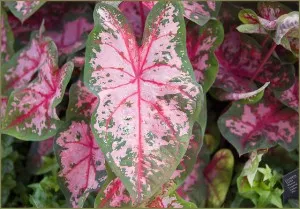
Houseplants go by many common names in addition to their scientific one. Caladium is also known as Elephant’s Ear, Mother-in-Law Plant, Candidum, Stoplight, and many others. Green, heart-shaped leaves splotched with pinkish-red are the signature feature of this pretty yet poisonous houseplant. Toxic to both dogs and cats, chewing on Caladium causes extreme irritation and swelling of the mouth, tongue and throat as calcium crystals cause soft tissue injury. Excessive drooling, vomiting and difficulty swallowing may also occur; contact your vet if you notice any of the above symptoms.
2. Mistletoe and Holly
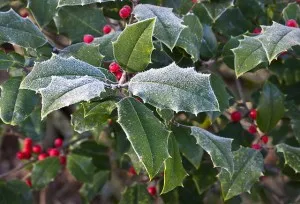
Love-inspiring in humans, bad for dogs and cats, mistletoe is generally mild to moderate but still unpleasant for pets. American varieties of these seasonal plants are less toxic than the European, but keep all kinds out of paws’ reach just in case. Gastrointestinal irritation (diarrhea, vomiting, drooling) and walking “drunk” are classic symptoms of mistletoe poisoning in cats and dogs. Ingesting large amounts can cause deadly hypotension and tachycardia, so see a vet if you can’t determine the amount eaten. The holly plant’s spiny leaves can also cause injury to the mouth, throat and intestines.
3. Poinsettia
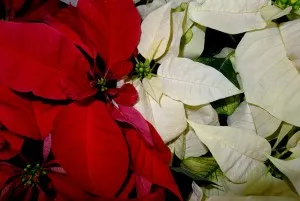
Another seasonal houseplant, poinsettias can put a damper on any holiday party by poisoning pets. The crimson Christmas plant’s sap is responsible for sufferers’ symptoms. Despite all the hype, poinsettia poisoning in dogs and cats is only mild, with skin and mouth irritation and gastrointestinal upset common symptoms. If your pet seems especially miserable, call your vet, who can advise some at-home treatments.
4. Dracaena
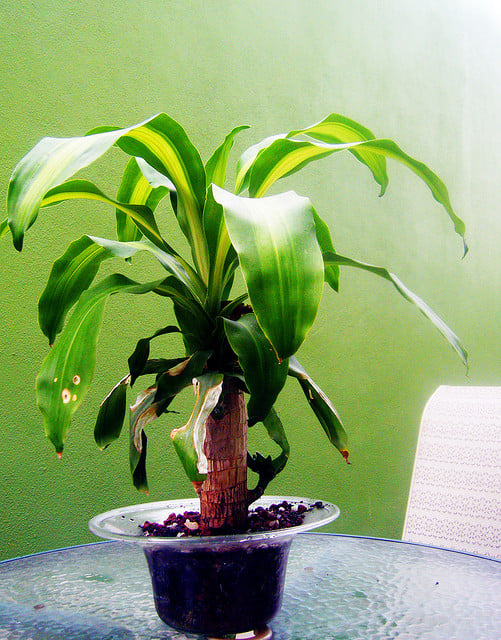
The term Dracaena actually refers to a genus of 40 succulents and shrubs. Aliases include the Cornstalk or Corn Plant, Ribbon Plant, Dragon Tree, Money Tree, and Lucky Bamboo. A class of compounds called saponins are to blame for Dracaena’s mild to moderate side effects, which include drooling, dilated pupils, walking “drunk,” and gastrointestinal discomfort.
5. Asiatic Lily
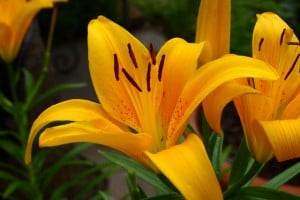
As I mentioned before, many kinds of lilies are especially toxic to cats. Whether they’re grown inside or placed in a vase, every part of the Asiatic lily is a nephrotoxin, or poison targeting the kidneys. Small amounts ingested without a pet parent’s knowledge can lead to gradual kidney failure over a period of weeks. For the best outcome, Pet Poison Helpline recommends IV fluids be started within 18 hours of your cat ingesting the lily. Vomiting may be induced, with treatment focusing on rehydration and overnight monitoring.
6. Sago Palm
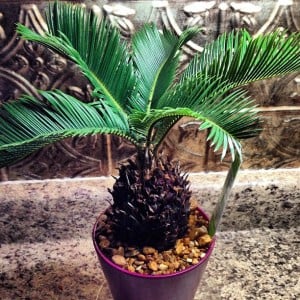
This tropical plant is found growing full-sized outdoors or miniature as a Bonsai variety. All parts of the sago palm are toxic to cats and dogs, especially the nuts, which contain cycasin. Liver failure occurs without treatment, along with gastrointestinal symptoms including black, tarry stools. Even with immediate treatment, the survival rate for Sago Palm poisoning in dogs and cats is only 50 percent. For the best odds, visit an emergency veterinary clinic at the first sign of any poisoning.
7. Daffodil
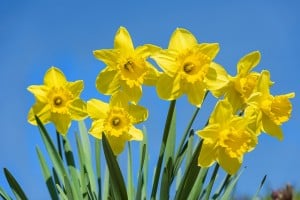
Commonly kept in vases, especially during spring, daffodils are moderately toxic to pets. Lycorine, an emetic – substance causing vomiting – is present in the sunny blooms, as well as calcium crystals that can irritate the mouth. Excessive drooling, swelling of the mouth, and difficulty breathing are symptoms of daffodil poisoning in dogs and cats. If the bulb or entire plant is consumed, more severe side effects can occur: decreased breathing rate and increased heart rhythm can lead to death if left untreated. Tulip and hyacinth bulbs are also be extremely toxic to pets.
(Featured image via Flickr.com/sjekkiebunzing)
